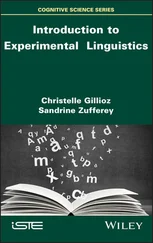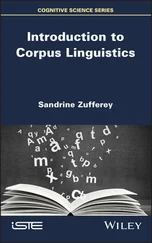(1991) Morphological Theory, Oxford, Blackwell.
Bibliography
421
(1996) Phonology, Oxford, Blackwell.
Spencer, A. and A. Zwicky (eds.) (1998) Handbook of Morphology, Oxford, Blackwell.
Sperber, D. and D. Wilson (1995) Relevance: Communication and Cognition (second edition), Oxford, Blackwell.
Spurling, Juliette (2004) ‘Traditional feature loss in Ipswich: Dialect attrition in the East Anglian county of Suffolk’, unpublished BA dissertation, University of Essex, Colchester.
Swann, J., R. Mesthrie, A. Deumart and T. Lillis (2004) A Dictionary of Sociolinguistics, Edinburgh, Edinburgh University Press.
Swinney, D. J. (1979) ‘Lexical access during sentence comprehension: (re)consideration of context effects, Journal of Verbal Learning and Verbal Behavior 18: 645–59.
Tagliamonte, S. (2006) Analysing Sociolinguistic Variation, Cambridge, Cambridge University Press.
Townsend, D. J. and T. G. Bever (2001) Sentence Comprehension, Cambridge, Mass., MIT
Press.
Trask, R. L. (1996) Historical Linguistics, London, Arnold.
Travis, L. (1984) ‘Parameters and the effects of word order variation’, PhD dissertation, MIT, Cambridge, Mass.
Trudgill, P. (1974) The Social Differentiation of English in Norwich, Cambridge, Cambridge University Press.
(1988) ‘Norwich revisited: recent linguistic changes in an English urban dialect’, English World-Wide 9: 33–50.
(2000) Sociolinguistics: An Introduction to Language and Society (fourth edition), London, Penguin.
(2003) A Glossary of Sociolinguistics, Edinburgh, Edinburgh University Press.
Valian, V. (1986) ‘Syntactic categories in the speech of young children,’ Developmental Psychology 22: 562–79.
(1990) ‘Null subjects: a problem for parameter-setting models of language acquisition’, Cognition 35: 105–22.
Van de Velde H., R. van Hout and M. Gerritsen (1996) ‘The devoicing of fricatives in Standard Dutch: A real-time study based on radio recordings’, Language Variation and Change 8: 149–76.
Vihman, M. M. (1994). Phonological Development: The Origins of Language in the Child, Oxford, Blackwell.
Wexler, K. (1994) ‘Optional infinitives, verb movement and the economy of derivations in child grammar’, in D. Lightfoot and N. Hornstein (eds.), Verb Movement, Cambridge, Cambridge University Press.
Wilson, D. and D. Sperber (2004) ‘Relevance Theory’, in L. R. Horn and G. Ward (eds.), The Handbook of Pragmatics, Oxford, Blackwell.
Wolfram, W. (1991) Dialects and American English, Englewood Cliffs N. J., Prentice Hall.
Wolfram, W. and N. Schilling-Estes (2005) American English: Dialects and Variation (second edition) Oxford, Blackwell.
Yavas, M. S. (2006) Applied English Phonology, Oxford, Blackwell.
Index
A-bar movement 306
comprehension errors in 215, 216–17, 378–80
ablaut 164
production errors in 215–16, 378
Abney, S. 360
agreement 135, 137, 144–5, 233, 248
accent (see phrasal stress)
in AAVE 233, 237
accusative case 248, 251, 265–6, 356, 360–1
in complement clauses 251
accusative possessors in Child English
in East Anglian English 233
359–61
in EME 320
accusative subjects
operations in syntax 264–5, 267–8, 306, 345, 407
in Child English 355–8
in SLI 219, 385
in infinitive clauses 251
in south western English 233
acquired language disorders 13, 213
allomorphs 152
acquisition of language (see also developmental
allomorphy 151–2
linguistics) 408
lexically conditioned 152
acrolect 234
phonologically conditioned 152, 220
activation in psycholinguistics 202, 209
plural 188–9
active articulator 31
third person singular present 220
active voice 137
allophones 77
additions in speech errors 115
allophonic variation 77
Adger, D. 267
allophony 77
adjacency pairs 401
alternation in phonology 26, 83–5, 90, 152
adjectives 130
alveolars 30, 109
comparative form of 130
alveopalatals (see palato-alveolars)
and derivational morphology 144
ambiguity (see also structural ambiguity) 5, 232
dimensional 175–6, 177, 179
amelioration in semantic change 231
incorporation 161
American English 55, 63, 71, 227
in language acquisition 187
A-movement 306
superlative form of 130
Ancient Egyptian 119
adjuncts 249, 331
antecedent 277
adverbs 130, 144
local for reflexives 277–8
Affected Object 334–5
anterior as phonological feature 86, 413
affix 140
anticipations in speech errors 115, 117
Affix Attachment 273, 319
antonyms 176, 208, 209
affricates 29
antonymy 176, 177–8
African American Vernacular English (AAVE)
aphasia 11–13, 213–19
agreement in 233, 237
selective impairment in 213
double negation in 297
apophony (see ablaut)
empty T in 271–2
apparent-time method 16, 66
inversion in 311–13
approximant as phonological feature 412
possessives in 237
approximants 33
age and variation in language use 235–6
in child phonology 100–4
age-graded sociolinguistic variables 16
Arabic 81, 224
Agent 305, 333, 334–5
arbitrariness of the linguistic sign 205
agglutinating languages 156–7
argument movement (see A-movement)
agrammatism (see also Broca’s aphasia) 214–17,
arguments 130, 247
377–82, 385, 408
Armenian alphabet 119
422
Index
423
articles ( see also determiners) 130, 133
borrowing 224–5
Ash, S. 237
bound morphemes 140
aspect 252
in aphasia 216
perfect 252, 261
in SLI 219–21
progressive 252
bound variable interpretation of pronouns
aspirated as phonological feature 87, 413
342–4
aspiration 35, 75–7, 87–90, 90–1
bound word 150
assimilation (see also harmony) 5
Bradford 47–8
in Farsi 49
Braine, M. 351
partial 100
Bresnan, J. 246
target of 100
British English ( see also Contemporary
total 100
Standard English) 62 , 69 –70, 71,
trigger for 100
227–8, 230
audience design 53–4, 409
broad transcription 76
Austin, J. L. 394
Broca, P. 12
Australian English 62, 64,
Broca’s aphasia (see also agrammatism) 214– 17,
71, 227
377–82
auxiliary copying in children 295
Broca’s area 12
auxiliary inversion 294–6
Brown, R. 189
auxiliary verbs 133
Bucholtz, M. 51
difficulties with in SLI 219, 385
Bulgarian 85
dummy 319
errors in SLI 385
calque 225
as finite T 259, 261
Cambodian 38
and gapping 272
Canadian English 227–8
perfect 136
Cantonese 79, 81
progressive 136
Cardiff 53
Caribbean English 66
babbling 96
case (see also genitive case, nominative case,
back as phonological feature 413
objective case) 248
backtracking in parsing 373
assignment of 264, 265–6, 267–8, 345, 356–8, back vowels 36, 109–10
360–1
Bailey, B. 313
errors in agrammatism 216
Bantu 156
errors in SLI 385
bare nominals 284–5
in Latin 158
in Child English 358–9
marking in Child English 355–8
base form of verbs 147
structural 356
basic level of categorisation 194–6, 226, 232
in Turkish 158
in Wernicke’s aphasia 217–18
categorical perception 113
basilect 235
causative verb 274–5
behaviourism 115
Celtic languages 164
Читать дальше
![Andrew Radford Linguistics An Introduction [Second Edition] обложка книги](/books/397851/andrew-radford-linguistics-an-introduction-second-cover.webp)











